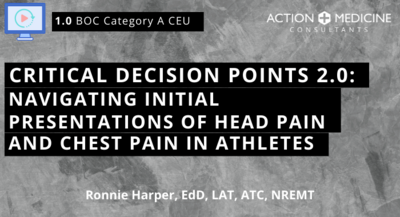AI Chat Bot
Critical Decision Points 2.0: Navigating Initial Presentations of Head Pain and Chest Pain in Athletes › Learning Material
Presentation (Video)
Updated Jan 22, 2024
Copyright © 2025 Action Medicine Consultants, LLC
___MESSAGE___
___MESSAGE___


